So don’t hear me wrong, Kakadu has been incredible to visit, and we’ve seen some amazing things, and learnt so much – but today was the first day on this trip that we felt we might’ve stayed one day too long somewhere. That’s essentially because we ran out of things to do and see. We have worked out that Kakadu’s peak dry season really doesn’t kick in until at least July, and gets going from there to October. There’s just so many walks and sights to see that are low-lying near rivers and billabongs, and so they’re all still closed for at least another 6 weeks or so. We possibly could’ve known more and done more research before we came – but equally, you’re at the mercy of how long the wet season runs for and how quickly the waters recede, and that can often be a week by week proposition. The Kakadu Access Report is super handy – wish we’d looked for it earlier than our second day here! And equally tricky to all of that is that Kakadu’s seven regions are all a bit of a drive from each other (although, Jabiru is wonderfully centrally located to them), so it’s difficult to overlap two or three regions into one day’s adventuring without spending a lot of time in the car, and subsequently walking in the heat of the afternoon.
So there’s a bit of a lesson for you: if you’re planning a standalone trip to Kakadu, perhaps aim for later in the dry season if you’re able. Even as far as September. That definitely seems to be when all the walks would be open, plus plenty of croc activity in safe places. But if you happen to be here in the earlier dry season months, there’s still heaps to do – just don’t expect to be able to see everything, and especially not the river and billabong walks. You could probably cover most of those aspects in two full days.
With that all said, today we headed up to the Erre region (known as East Alligator). The primary thing on our list to see here was, of course, Ubirr. It’s quite an easy loop walk around to the different galleries, and the art contained in each of the galleries was extravagant. There was just so many different paintings, and such variations. The main art gallery of Ubirr was huge – sitting under an enormous cliff edge. It had plenty of the “x-ray” style of animal painting, which illustrates an animals organs and skeletal system. There was also a painting right up on the roof – at least 20 or 30 metres up – which the local people believe was painted by their spirit – it certainly defies physics as to how it was painted. At the very least, it makes you wonder just how many tens of thousands of years ago it was painted, and how the rocks in this cave would’ve been sitting that long ago.
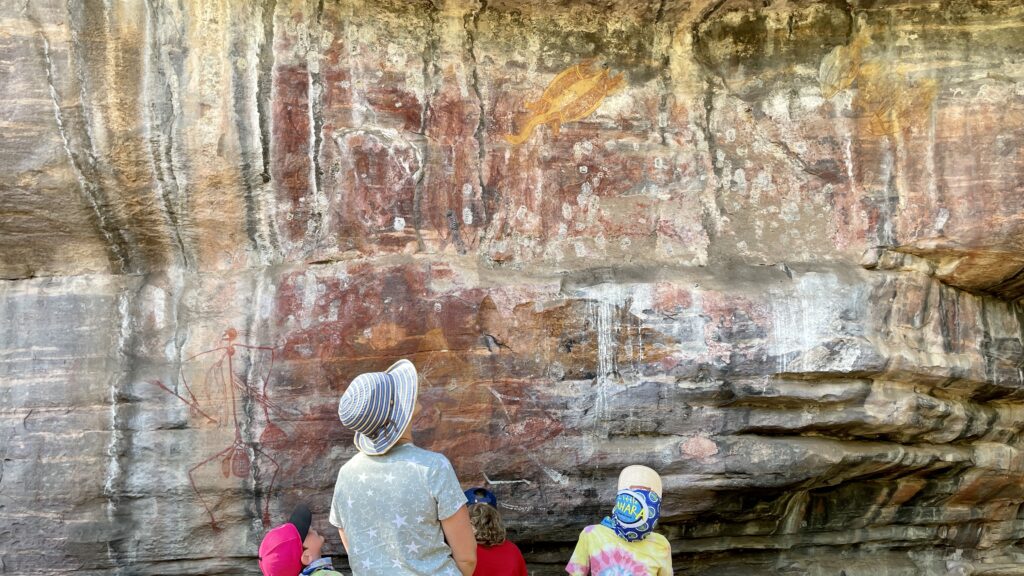
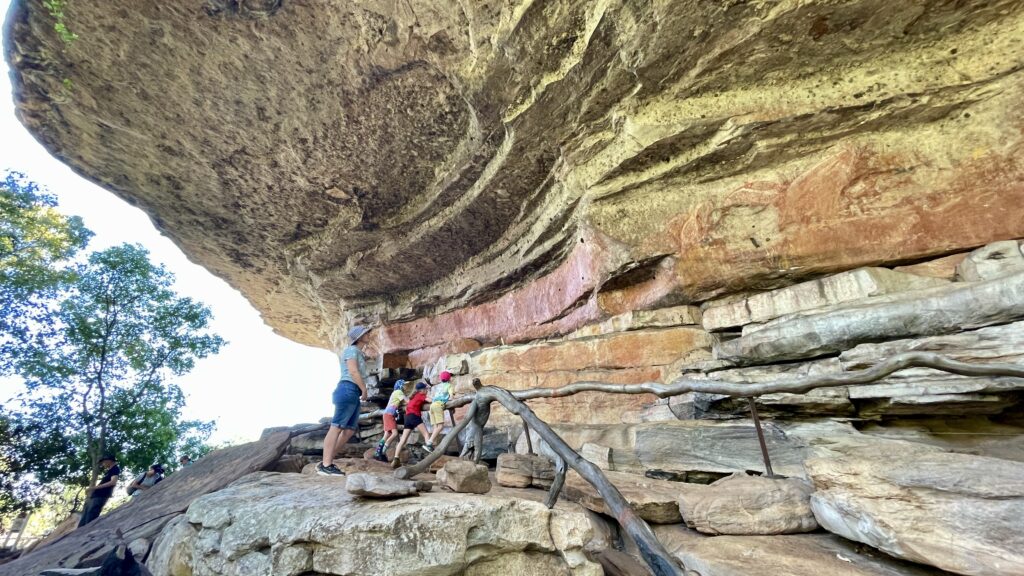
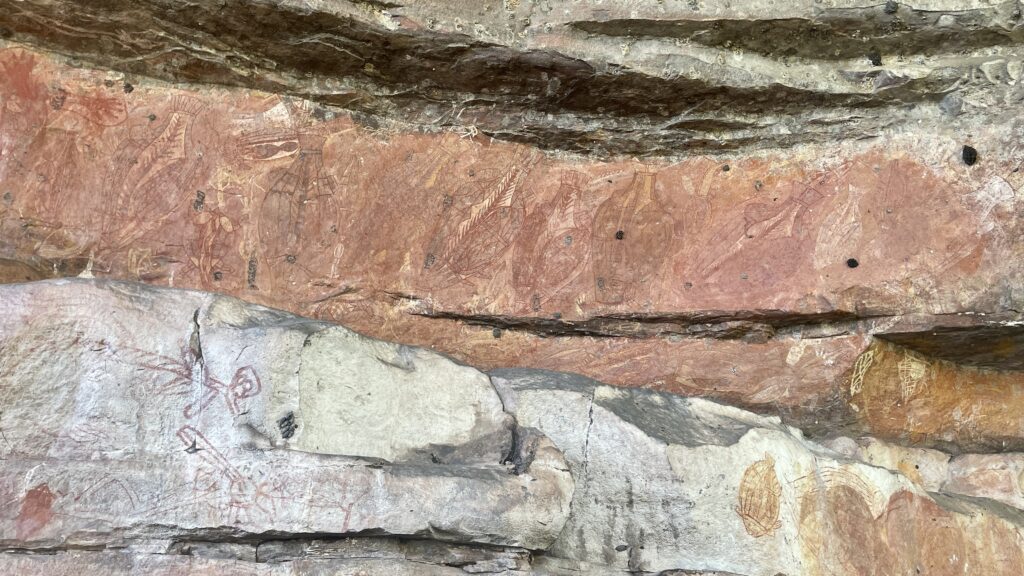
As we walked around past a couple of smaller galleries, we made our way up on to the Nadab Lookout – a rock plateau that sits just above all the galleries you’ve looked at. But from the top, you essentially have 360º views of the Erre region around you, and off into Arnhem Land. It was an incredible view.
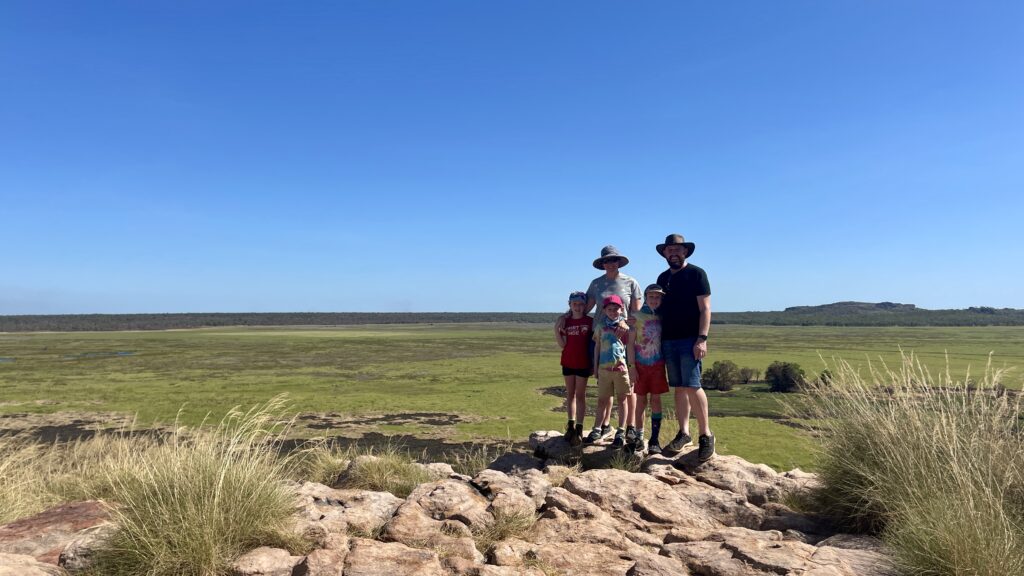
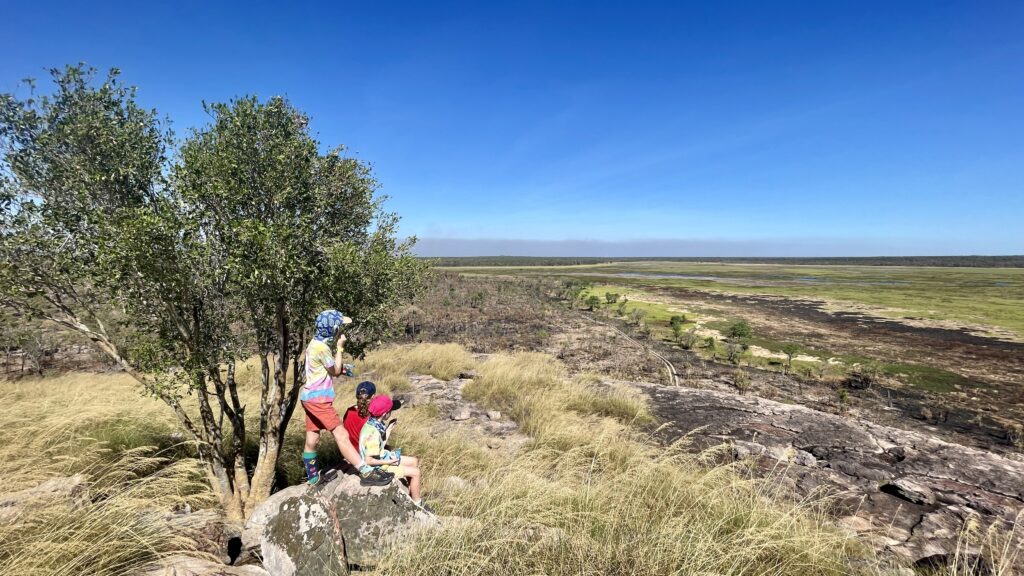
After we came down from the lookout, we finished off the walk looking through the final gallery at Ubirr, which houses the very significant painting of the Rainbow Serpent. Ubirr and its artwork is definitely worth a visit if you get to Kakadu!
We headed down the road to Cahills Crossing for lunch. Cahills Crossing is essentially where the Arnhem Hwy crosses into Arnhem Land. We didn’t really have any interest in heading across to Arnhem Land – as amazing as I’m sure the land is, you need a permit to head into there because essentially (as I described it to the kids) you’re heading into people’s backyards. It’s not an area set up for tourists. But at the side of Cahills Crossing is an amazing viewing platform that overlooks the actual crossing, and the East Alligator river. Apparently, later into the dry season, this is an amazing place to sit and watch crocs!
There were a few picnic tables there, but all out in the sun. So we headed down to the other end of the viewing platform and just sat on some rocks to watch the river in the shade while we ate our lunch. It was fun watching all the different people fishing down on the river, and after a little while, we eventually saw a couple of cars and trucks cross the river, which turned into quite the exciting viewing experience! The crossing itself is technically open, but declared impassable by NT Roads, because the East Alligator river is still too high – but the advice on the Park website is that you need a high clearance 4WD to get across. That didn’t seem to bother the Toyota Hiace van who wanted to make the crossing – I got quite nervous as he started crossing, but he managed to make it. The highlight was definitely the road train making his way across.
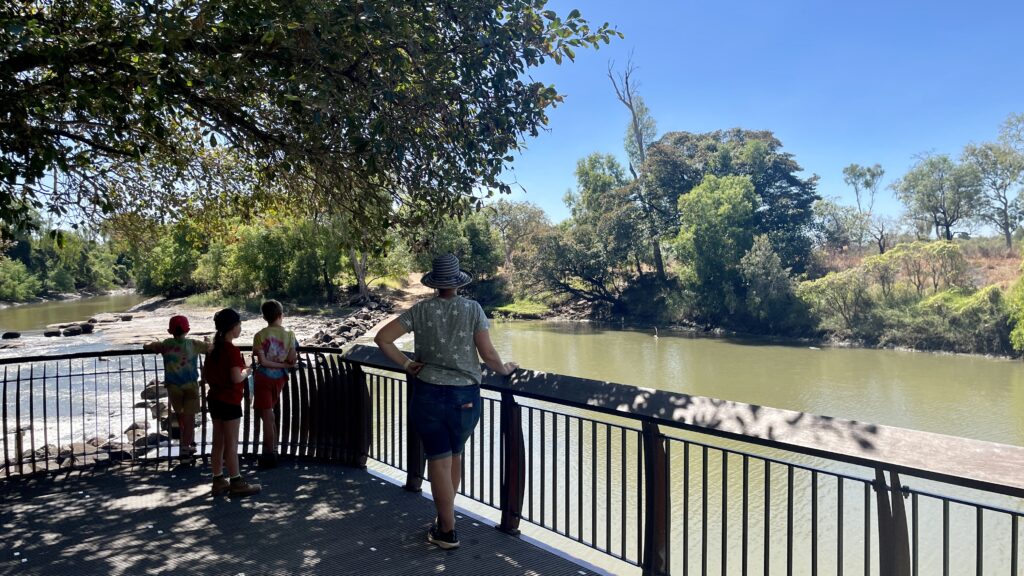
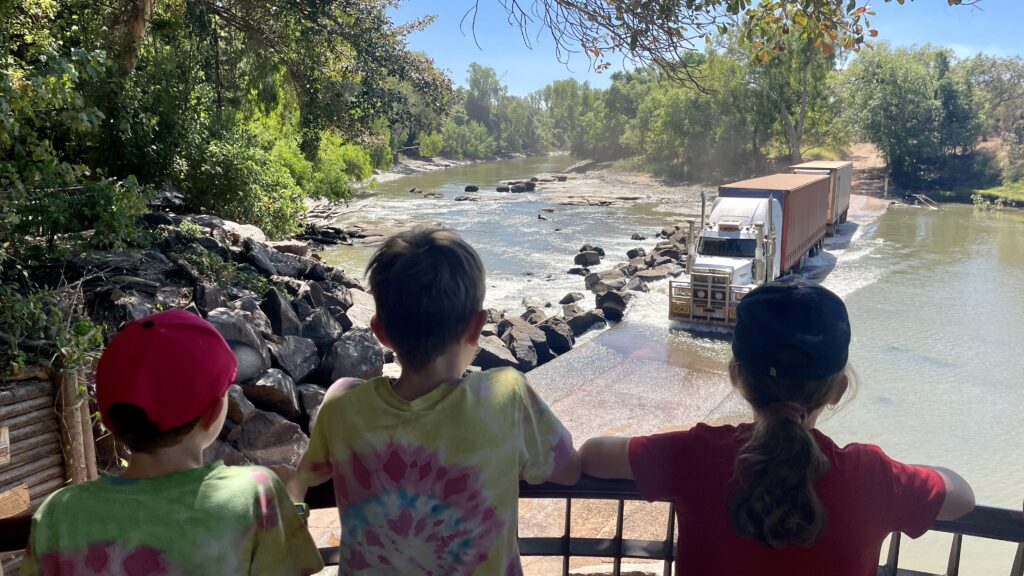
We did manage to spot a croc in the river in front of us! He popped up to the surface and just cruised along for a little while. It made us worry a bit for the lads in their fishing boat as they came back up the river, and the guys fishing on the edge of the river. But they did seem to notice him and didn’t seem too bothered.
We were back home by early afternoon. We did a quick stop in at the IGA for some dinner supplies for tonight – bacon & egg rolls. And then it’s just been a relaxing afternoon – a bit of board games and a bit of travel diary writing. I’m enjoying sitting out the front of our unit with a bit of music going while I write this entry up – it’s only 3pm, so you’re getting it much earlier than normal today! In a little while, once the bite of the sun has gone a little, we’ll probably head back down to the pool with the kids for one last swim here.
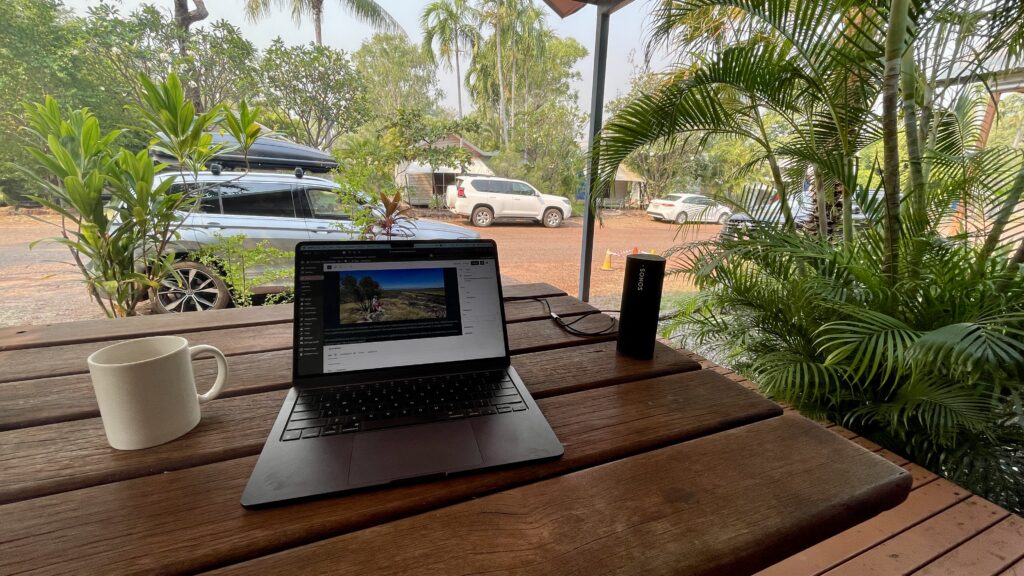
Tomorrow we pack up and get back on the road – time to head to Darwin! It’ll be a nice long stay there: 6 nights! Partly because there’s lots to do there, but a big part of it will also be trying to have a bit of downtime for a couple of days. Whether that’s just a day of swimming in the pool there, watching a couple of movies, playing in a park – whatever it may be.